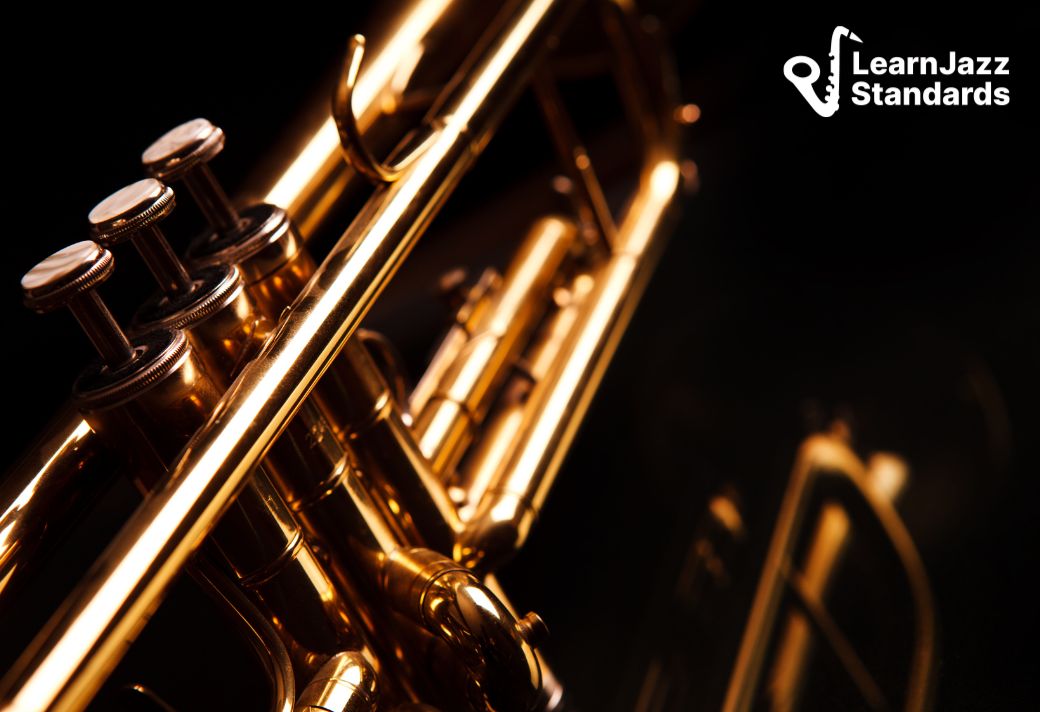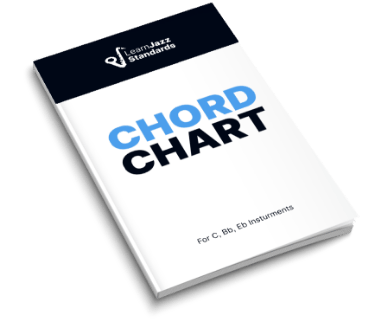Why practice Rhythm Changes? Well, if you want to learn how to play jazz music, you’ll need to understand the essential jazz chord progressions found in this classic song form.
In this article, we’ll explore the history of Rhythm Changes and analyze its chord progression. Then we’ll provide a practice plan to help you master Rhythm Changes in all 12 keys!
If you want to learn jazz theory and become the best jazz player you can be, check out the Learn Jazz Standards Inner Circle. In the Inner Circle, members have full access to scores of incredible jazz education resources and learn a new jazz standard each month!
Improve in 30 days or less. Join the Inner Circle.
Table of Contents
Introducing Rhythm Changes
If you want to get right to the practice plan, please use the Table of Contents above. Otherwise, onward with the article!
For those who might not know, “Rhythm Changes” tunes are contrafacts based on the George Gershwin tune, “I Got Rhythm.” Contrafacts are jazz compositions that put an original melody over existing song forms and chord changes.
Many Charlie Parker tunes (including many of his Rhythm Changes tunes) are contrafacts, which put a new melody over existing chord changes.
Here are some Charlie Parker tunes that use the chord changes to “I Got Rhythm”
- “Anthropology” (which was co-written with Dizzy Gillespie; learn more about Anthropology)
- “Moose the Mooche” (learn more about Moose The Mooche)
- “Dexterity” (learn more about Dexterity)
- “Steeplechase” (learn more about Steeplechase)
- “Passport”
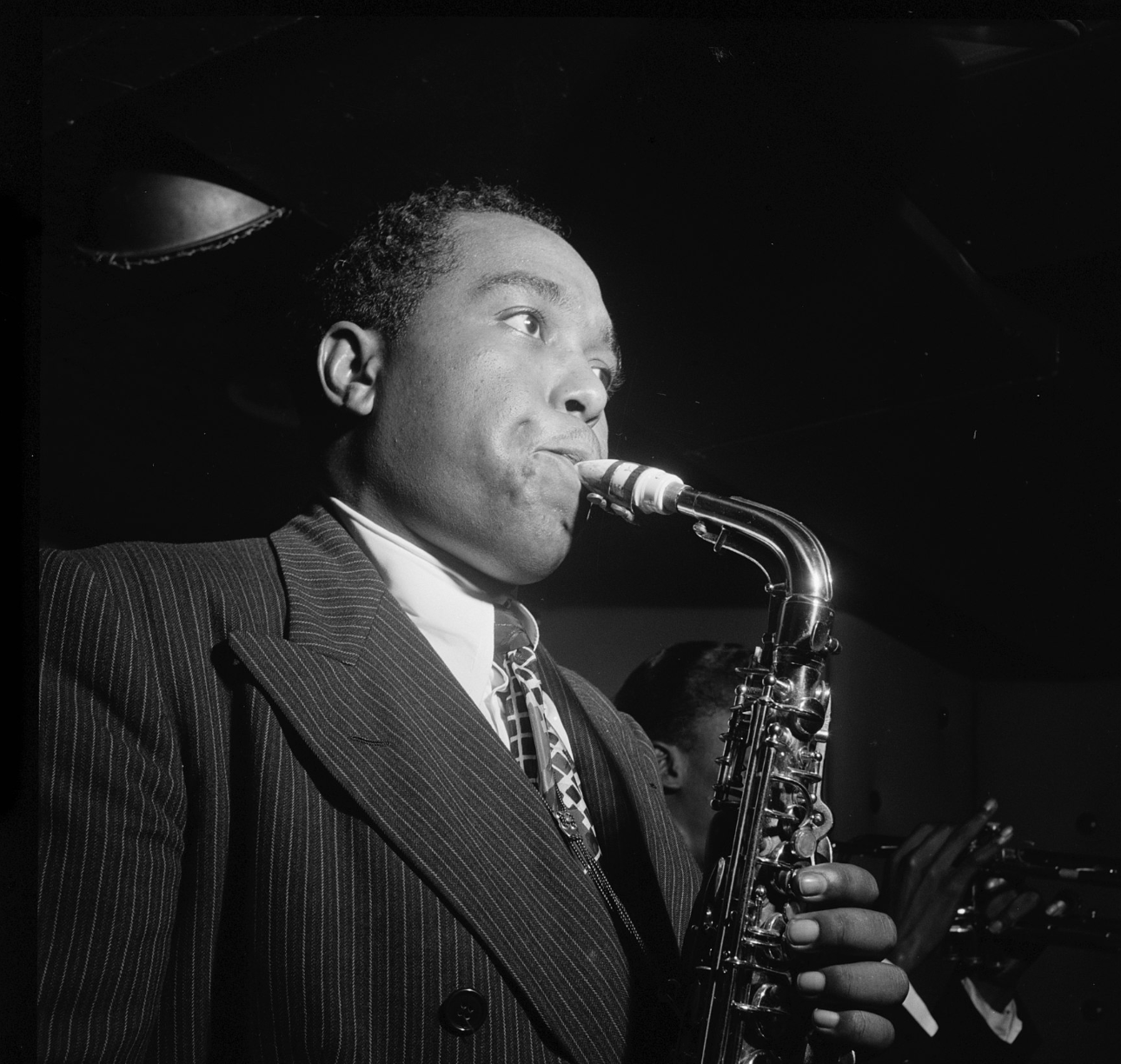
image source: Wikipedia Commons
Other famous jazz musicians who’ve contributed Rhythm Changes tunes to the body of jazz standards include:
- Sonny Rollins with “Oleo”
- Thelonious Monk with “Rhythm-A-Ning”
- Lester Young with “Lester Leaps In”
- Duke Ellington with “Cotton Tail”
- Miles Davis with “Serpent’s Tooth”
- Sonny Stitt with “The Eternal Triangle”
This is just a small sample of the Rhythm Changes tunes out there, but these are among the more popular ones. Ok, so we know that Rhythm Changes is an important song form in jazz, but that still doesn’t answer why.
Why Are Rhythm Changes Tunes Important for Jazz Musicians To Learn?
Rhythm Changes songs contain two extremely important chord progressions and often exhibit essential variations on them. Because of this, they are extremely useful practice vehicles for learning jazz and practicing jazz vocabulary.
Therefore, many jazz musicians know these changes like the back of their hands, and if you attend jam sessions, you’ll quickly encounter Rhythm Changes. Simply put, Rhythm Changes is an essential song form you need to know if you want to learn jazz. It’s right up there next to the blues.
Two Essential Jazz Chord Progressions Found in Rhythm Changes
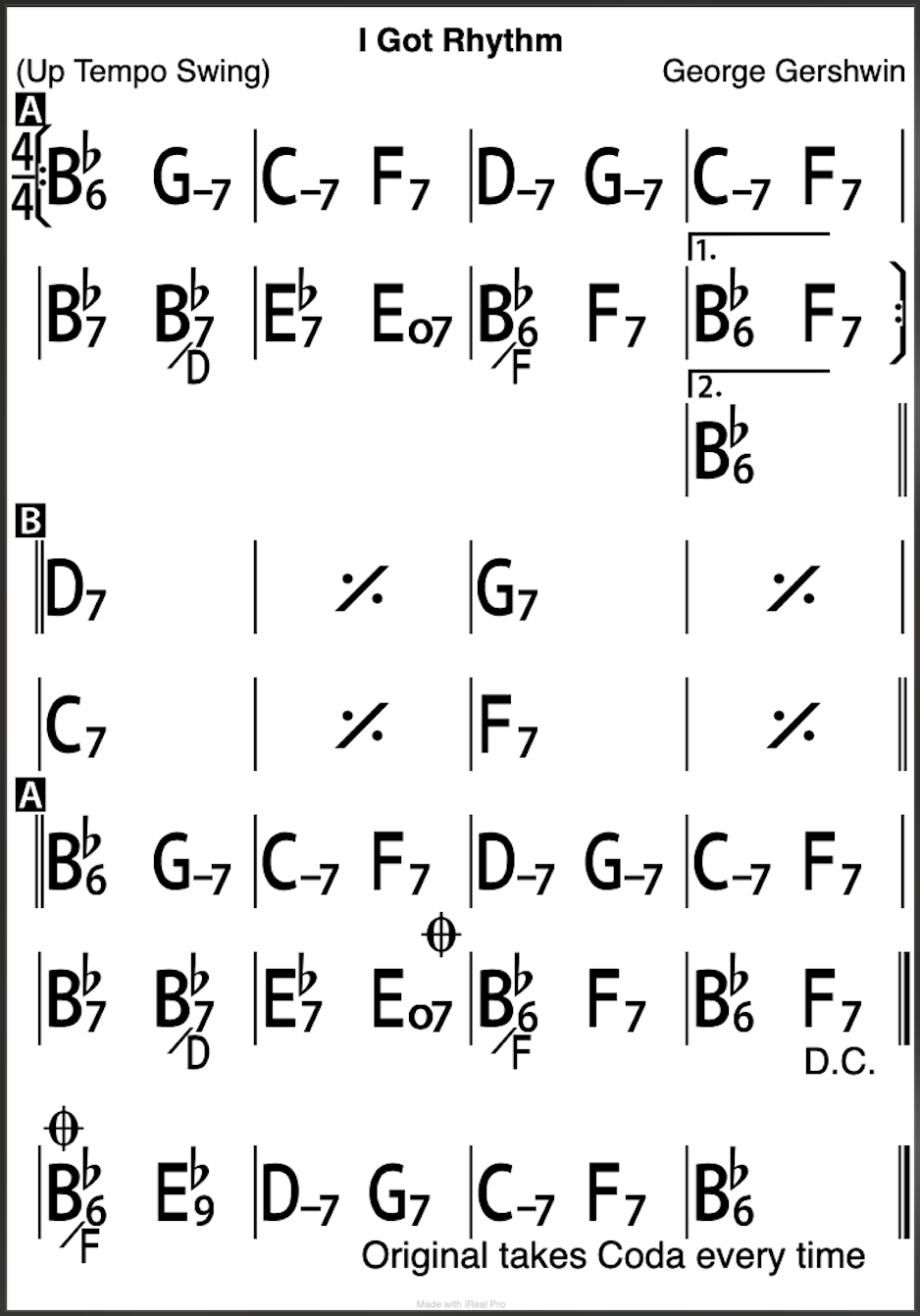
Let’s learn more about the two essential chord progressions found in Rhythm Changes:
- I-vi-ii-V
- III-VI-II-V
These two chord progressions and their variations are found in many other jazz standards. Let’s learn why each is important to master.
1. I-vi-ii-V and Variations
The original Rhythm Changes progression starts with a I-vi-ii-V progression (shown in red) followed by a iii-vi-ii-V progression (shown in blue) in the first four bars. In the next four bars, we get a I7 chord that takes us to the IV7 (shown in green) and then we have a series of V-I cadences (shown in purple).
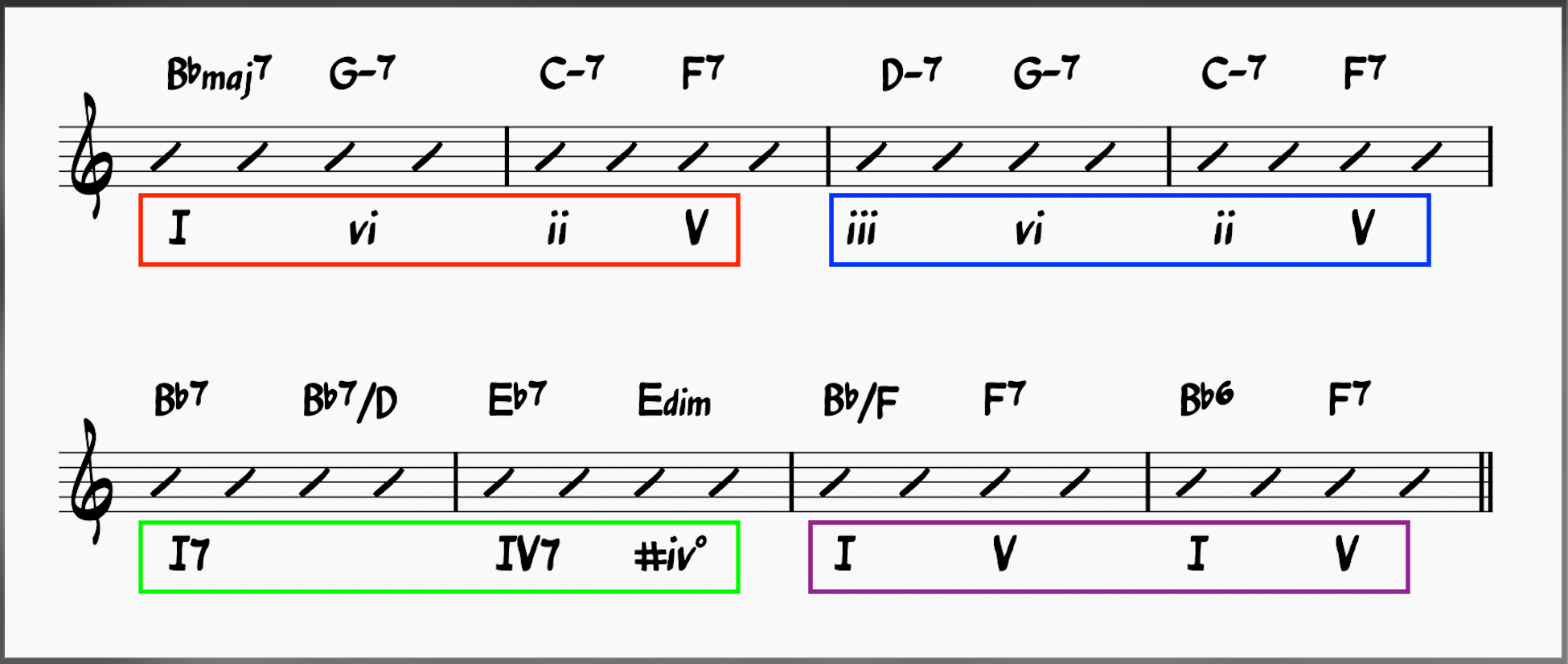
Because of the relative harmonic simplicity of these changes, there are many variations you can apply to the rhythm changes chord progression when improvising or playing these chords.
Let’s explore some of them by looking at a heavily subbed-out version of the A section.
Using Chord Substitutions on the A Section
Here’s an example where we’ve used many chord substitutions on the first A section of Rhythm Changes. It is quite different than the original rhythm changes progression, but it still works!
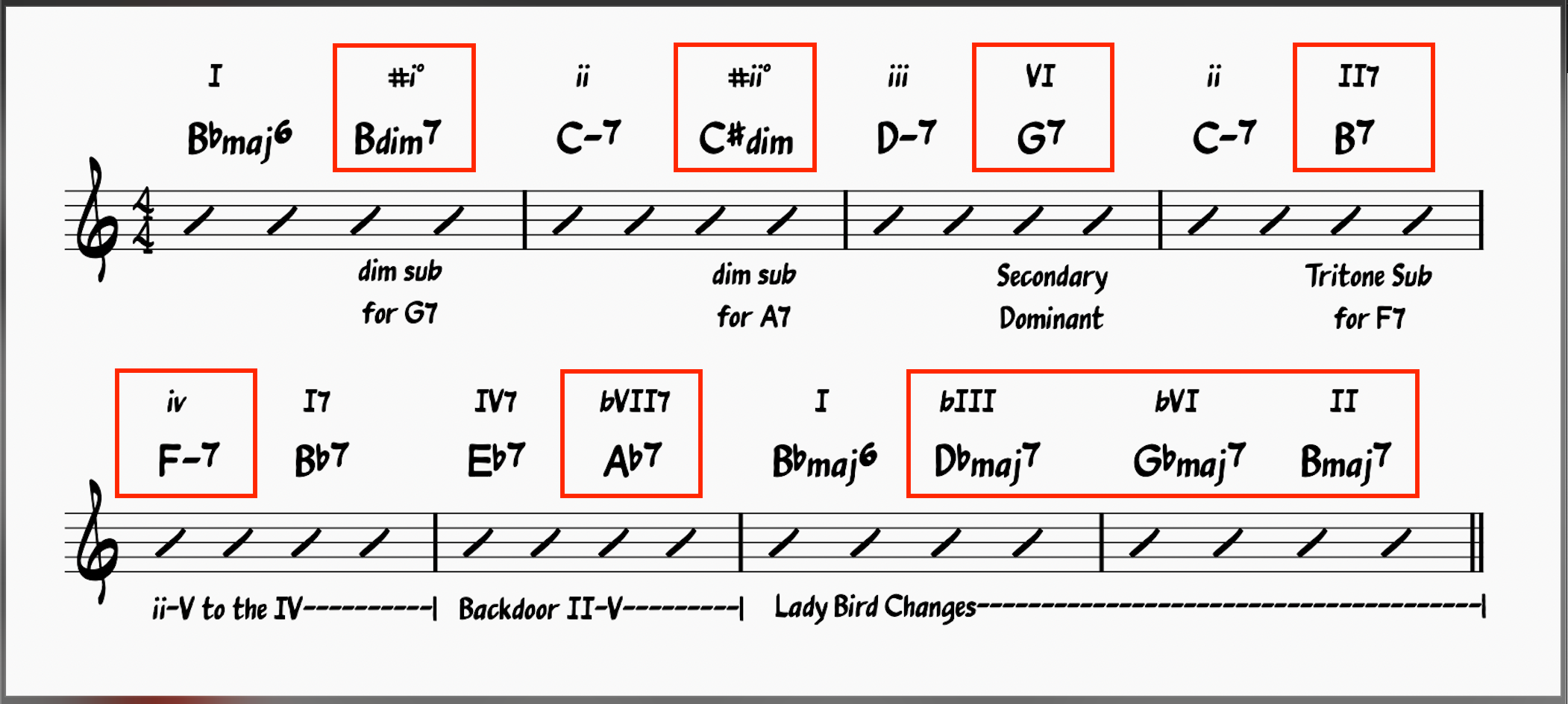
Changes to the original “I Got Rhythm” chord changes are boxed out in red. This variation uses:
- Diminished chord substitutions (bars 1 and 2). Here dominant chords are replaced by diminished chords built off of either the b9, the 3rd, the 5th, or the 7th of the original dominant chord. These diminished chords are replacing secondary dominants which are already chord substitutions, so this is a sub on a sub!
- Secondary dominants, which we discuss in greater detail later (bar 3). In brief, minor seventh chords that lead to a chord a fourth above or a fifth below can be changed to dominant quality to make a stronger pull toward the following chord.
- Tritone substitutions (bar 4). Tritone substitutions are usually dominant chords built off the tritone of the original chord. Here a B7 is replacing an F7. Both B7 and F7 share the same guide tones, so this sub works nicely.
- Adding a ii before a V (bar 5). when you have a lone V chord, you can add a ii before it to create a mini ii-V progression.
- Using a backdoor ii-V (bar 6). Backdoor ii-Vs use chords borrowed from the parallel minor key. the Eb- and Ab7 chords come from the parallel minor key of Bb-. Check out this article for more on parallel minor.
- Using the Lady Bird changes (or Tadd Dameron changes) as a turnaround (bars 7 and 8). Turnarounds are simply ways to get back to the I. If the destination is the same, the path you take to get there can be quite varied. This is one of the more extreme turnarounds.
Check out this article for more on chord substitutions.
BEFORE YOU CONTINUE...
If you struggle to learn jazz standards by ear, memorize them, and not get lost in the song form, then our free guide will completely change the way you learn tunes forever.

2. III-VI-II-V and Variations
The bridge to Rhythm Changes is a series of dominant chords that move in the cycle of fourths. D7 moves to G7, G7 moves to C7, and finally, C7 moves to the actual dominant chord in the key of Bb, F7.
Except for F7, this series of dominant chords are secondary dominants. With secondary dominants, each dominant chord temporarily tonicizes the following chord in the progression.
- D7 is the V chord of G
- G7 is the V chord of C
- C7 is the V chord of F
Each chord wants to resolve to the next chord a fourth away because each chord is dominant. Check out this dominant chord workout to practice improvising over dominant chords moving in fourths.
These secondary dominants help pull us along in the progression despite never fully resolving (because each destination is dominant). We don’t fully resolve until we leave the bridge and come to the Bb in the last A section.
Let’s explore a common variation on the III-VI-II-V progression in the Rhythm Changes bridge. Players will often put a ii-7 chord before each secondary dominant, creating a series of ii-Vs that move in fourths.
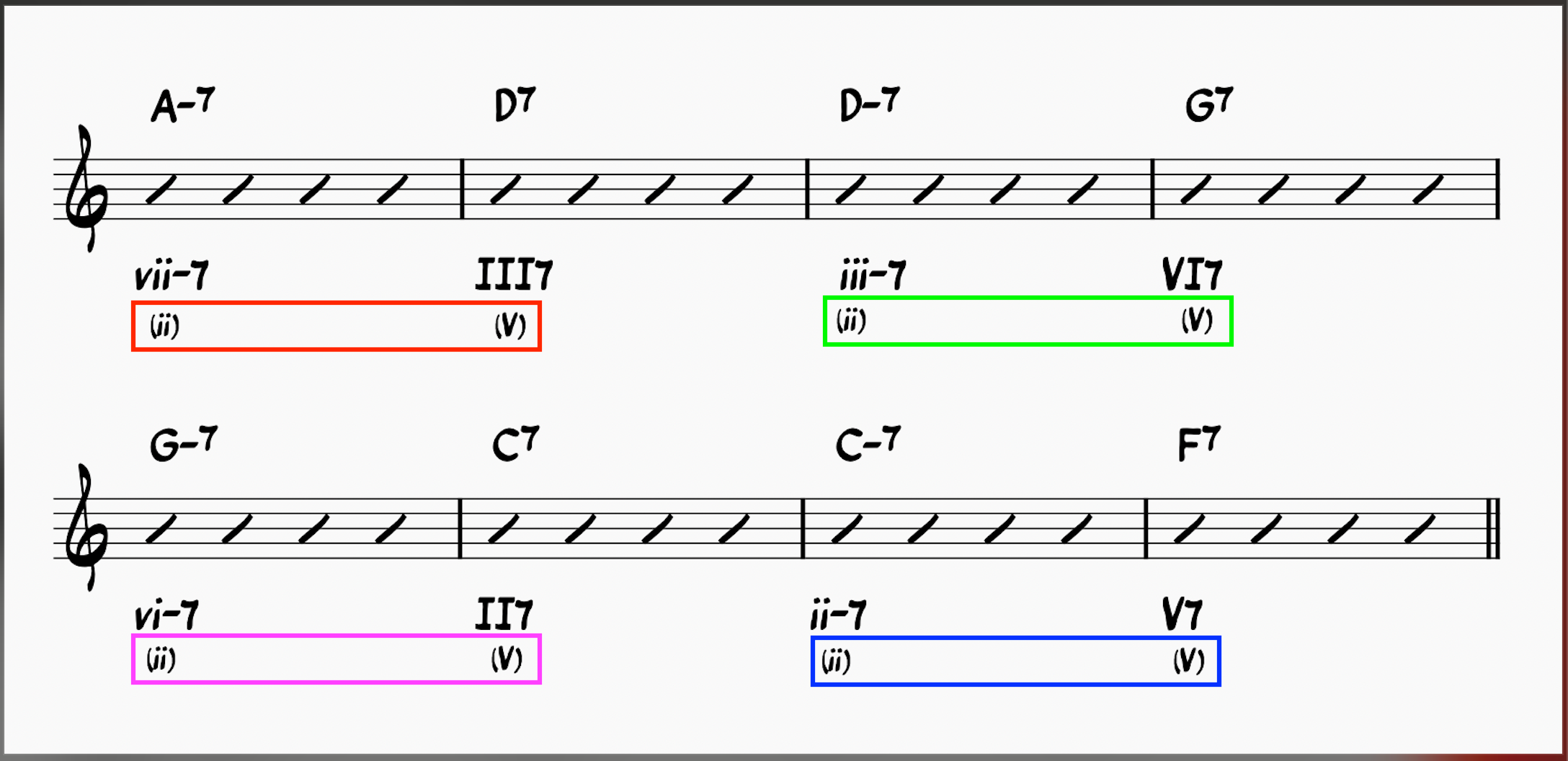
The first two bars are a ii-V to G (red), the next two are a ii-V to C (green), the following two bars are a ii-V to F (pink), and finally, we come to the diatonic ii-V back to Bb (blue).
If you look closely, we’ve actually encountered another variation on the I-vi-ii-V progression in the bridge. Only this I-vi-ii-V is drawn out over eight measures.
The Hidden I-vi-ii-V
Those familiar with chord substitutions will realize that the bridge of Rhythm Changes is another I-vi-ii-V chord progression in disguise. Let’s work backward to see how.
First, let’s get rid of all those secondary dominants and return each chord to its diatonic form.
Let’s turn the D7 chord (III7 chord) back to a D-7 chord (iii chord), the G7 chord (VI7 chord) back to a G-7 chord (vi chord), and the C7 chord (II7 chord) back into a C-7 chord (ii chord).
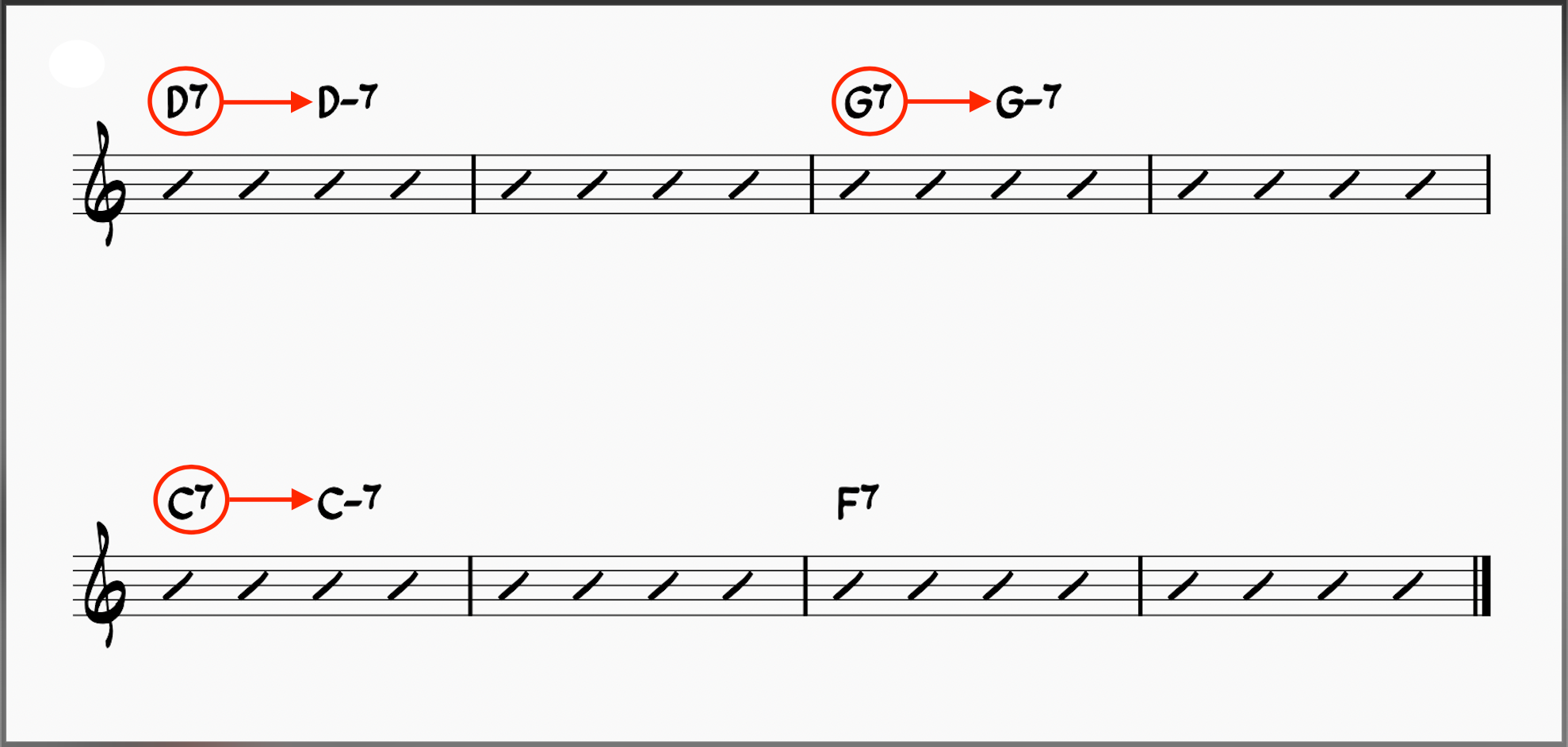
We’ve reverted the chord progression to a diatonic iii-vi-ii-V!
Now for the next step. Another common chord substitution technique is called diatonic chord substitution. With these kinds of chord substitutions, you take one diatonic chord and swap it for another.
Common diatonic chord substitutions are:
- Tonic/Mediant substitutions (I chord and iii chord)
- Tonic/Submediant substitutions or relative major/minor substitutions (I chord and vi chord)
- Supertonic/Subdominant substitutions (ii chord and IV chord)
Let’s turn the D-7 into a Bbmaj7. By doing this, we are swapping the mediant chord (iii chord) for the tonic chord (I chord). Here’s why this works.
D-7
- 7th = C
- 5th = A
- 3rd = F
- Rt. = D
Bbmaj7
- 7th = A
- 5th = F
- 3rd = D
- Rt. = Bb
These chords share many of the same chord tones. D-7 is an extension of Bbmaj7. A Bbmaj9 chord is spelled Bb, D, F, A, C.
When we make the switch, we’re right back to a basic I-vi-ii-V:
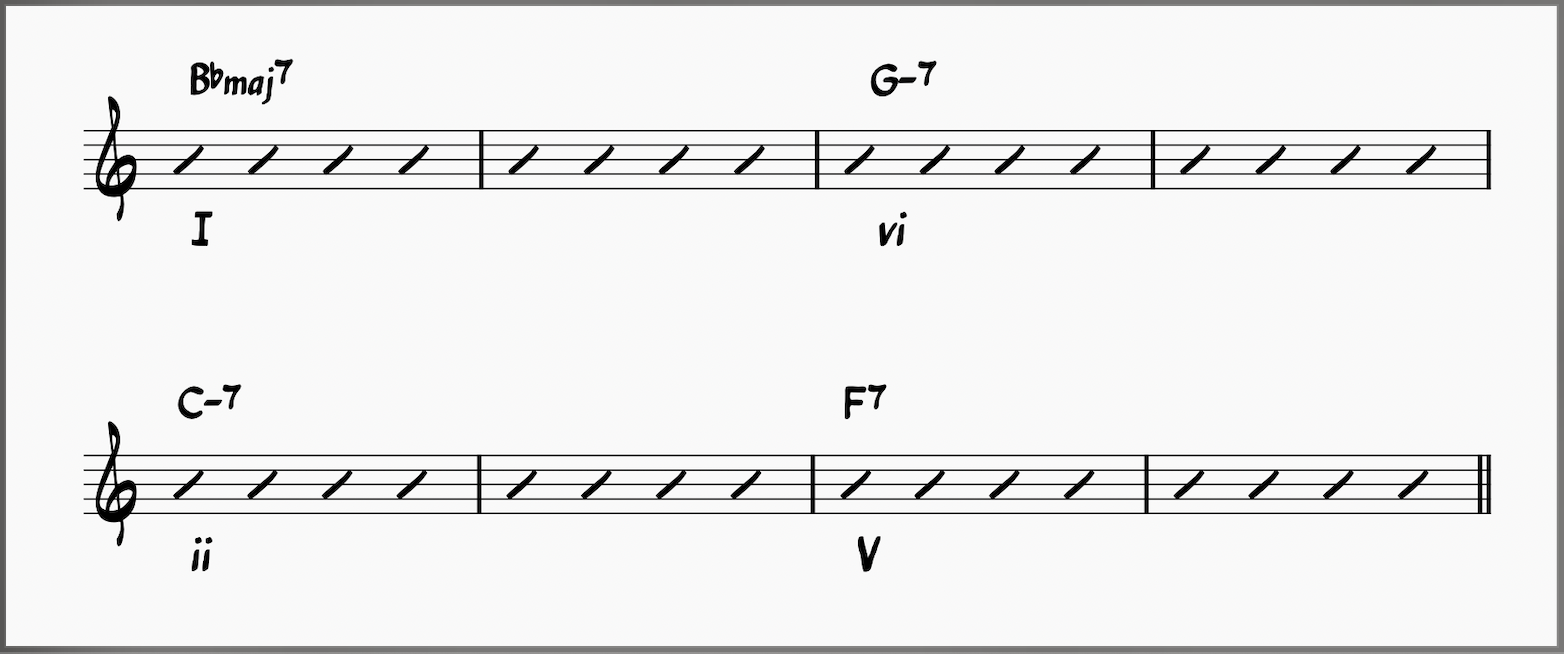
For more on other jazz chord progressions, check out this article on 9 important jazz chord progressions.
How To Master Rhythm Changes in All 12 Keys in One Week
Here is your Rhythm Changes one-week practice plan!
For days one through six, you’ll improvise (and comp if you are a chord player) over the changes in two keys a day. That will bring you through all twelve. On day seven, you’ll review by playing through all twelve keys! It’s kind of like the Rhythm Changes final boss!
Check out the plan below:
Day 1
- Practice C Rhythm Changes for 15-30 min. (C Rhythm Changes)
- Practice F Rhythm Changes for 15-30 min. (F Rhythm changes)
Day 2
- Practice Bb Rhythm Changes for 15-30 min. (Bb Rhythm Changes)
- Practice Eb Rhythm Changes for 15-30 min. (Eb Rhythm Changes)
Day 3
- Practice Ab Rhythm Changes for 15-30 min. (Ab Rhythm Changes)
- Practice Db Rhythm Changes for 15-30 min. (Db Rhythm Changes)
Day 4
- Practice Gb Rhythm Changes for 15-30 min. (Gb Rhythm Changes)
- Practice B Rhythm Changes for 15-30 min. (B Rhythm Changes)
Day 5
- Practice E Rhythm Changes for 15-30 min. (E Rhythm Changes)
- Practice A Rhythm Changes for 15-30 min. (A Rhythm Changes)
Day 6
- Practice D Rhythm Changes for 15-30 min. (D Rhythm Changes)
- Practice G Rhythm Changes for 15-30 min. (G Rhythm Changes)
Day 7
- Review all 12 keys of Rhythm Changes here, and practice improvising a minimum of 4 choruses for each key.
For another great practice challenge, check out our Blues in 12 Keys challenge! Be sure to check out this article if you aren’t convinced of the benefits of practicing in all 12 keys.
Want To Master Other Jazz Tunes? Join the Learn Jazz Standards Inner Circle.
Want to take your jazz playing to the next level? Check out the Learn Jazz Standards Inner Circle. The Inner Circle is designed for players who want to take their jazz playing to the next level.
Improve in 30 days or less. Join the Inner Circle.




